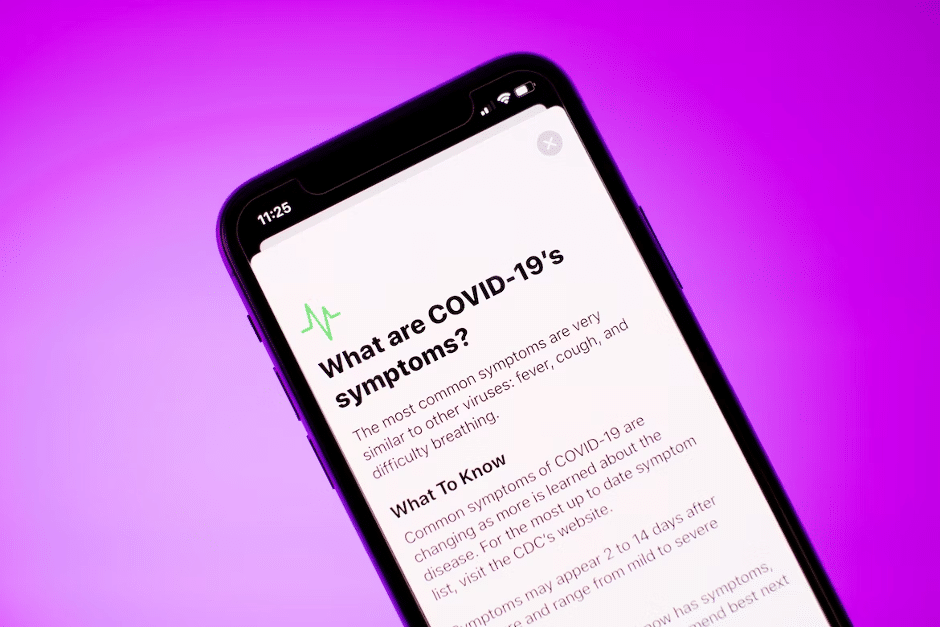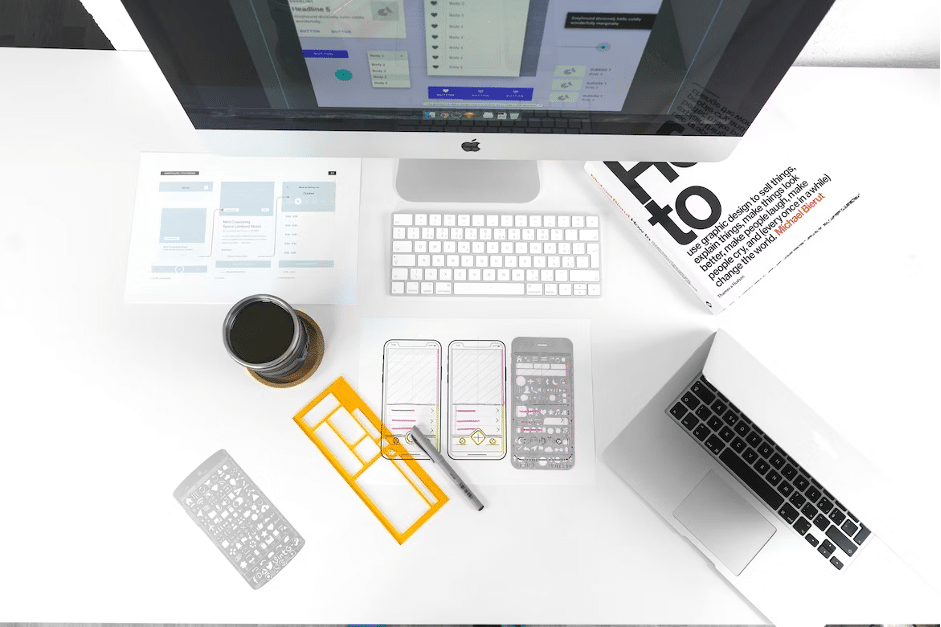In this digital era, healthcare mobile applications have emerged as powerful tools that improve the way we access and engage with healthcare services. With a plethora of functionalities ranging from health monitoring to telemedicine consultations, these applications have garnered huge popularity among healthcare professionals and consumers. However, understanding how to develop a health app is crucial for stakeholders involved in its creation and utilization.
This article serves as a comprehensive guide, offering insights into the multifaceted components of healthcare software product development and shedding light on key considerations to achieve successful and trustworthy applications.
Types of healthcare mobile applications: Meeting diverse health needs

Healthcare mobile applications come in various forms, each designed to address specific needs and cater to different user requirements. Understanding the different types of healthcare apps is essential for developers and stakeholders involved in the development process:
Health and fitness apps.
These applications prioritize the encouragement of healthy habits and engagement in physical activities. Features may include tracking physical activity, calorie counting, and providing workout routines. Some apps also offer personalized diet plans and reminders for medication and hydration.
Telemedicine apps.
Telemedicine apps enable remote consultations between healthcare providers and patients. Users can schedule appointments, have video or audio consultations, and receive prescriptions or medical advice remotely. Such apps are particularly useful for individuals with limited mobility or in rural areas with limited access to healthcare facilities.
Electronic health record (EHR) apps.
EHR apps provide a digital platform for healthcare providers to access and manage patient health records. They allow doctors to update patient information, view medical histories, and monitor treatment plans. EHR applications enhance communication and cooperation among medical practitioners, resulting in enhanced quality of patient care.
Medication management apps.
These apps assist users in managing their medication schedules and dosage. Features may include medication reminders, pill identification, and drug interaction checks. Some apps also allow users to track their medication intake and share reports with healthcare providers.
Chronic disease management apps.
These applications are designed to assist individuals in effectively managing long-term health conditions such as diabetes, asthma, or hypertension. They provide tools for monitoring symptoms, tracking medication usage, and recording vital signs. Some apps may offer educational resources and personalized tips to improve disease management.
Mental health apps.
Mental health apps aim to support users in maintaining good mental well-being. These functionalities can encompass mood monitoring, meditation practices, stress coping strategies, and availability of therapeutic support materials.
The diversity within these app categories ensure that healthcare mobile applications can cater to a wide range of healthcare needs, improving accessibility, convenience, and overall patient care.
Must-have features for health app development
Developing a successful healthcare mobile application requires careful consideration of essential features that ensure user satisfaction, functionality, and security. By incorporating the following must-have features, developers can create robust and user-friendly healthcare applications:
Secure user authentication.
Implementing a robust user authentication system is vital to protect sensitive health data and maintain user privacy. Incorporate secure login methods such as two-factor authentication or biometric authentication to enhance security.
EHR integration.
Enabling the integration of the application with established EHR systems facilitates the seamless access and updating of patient information by healthcare providers. This feature facilitates accurate and up-to-date patient data for better diagnosis and treatment.
Appointment scheduling and reminders.
A feature that enables users to schedule appointments with healthcare providers and receive timely reminders is essential for efficient healthcare management. Integration with calendars and notifications ensures users never miss important appointments.
Secure messaging and communication.
Providing a secure messaging platform within the application allows seamless and confidential communication between healthcare providers and patients. Encryption and data protection measures ensure the privacy and confidentiality of sensitive medical information.
Health data tracking and analytics.
Incorporating features for tracking vital signs, medication adherence, or symptoms helps users monitor their health progress. Analytics tools can analyze collected data to provide insights and personalized recommendations for users.
Integration with wearable devices.
Connecting the application with wearable devices such as fitness trackers or smartwatches enables real-time health monitoring and data synchronization. This integration enhances the accuracy and reliability of health data and allows for personalized insights and recommendations.
Emergency assistance and alerts.
Including a feature for emergency assistance and alerts allows users to quickly reach out for help in critical situations. This feature may include emergency contact information, location sharing, or one-touch emergency services.
These features contribute to the overall success and usability of healthcare applications, driving improved patient care and engagement.
Design aspects of mobile health apps: Enhancing user experience and engagement

When it comes to software development in healthcare, design plays a crucial role. Developing a health app with user-friendly design in mind not only enhances user experience but also promotes engagement and adherence to health goals. Here are some key design aspects to consider during the development process:
- Intuitive and user-centric interface. Having a tidy and user-friendly interface is vital for guaranteeing effortless navigation and a seamless user experience. Use clear and visually appealing icons, buttons, and menus to guide users through the app’s functionalities.
- Consistent and responsive design. Maintain a consistent design throughout the app, including colors, fonts, and visual elements. Ensure the app is responsive and adapts to different screen sizes and orientations for optimal usability.
- Visual hierarchy and information architecture. Organize content and features in a logical and structured manner, prioritizing important information. Utilize visual hierarchy techniques, such as contrasting colors and font sizes, to guide users’ attention to key elements.
- Engaging visuals and graphics. Incorporate high-quality visuals and graphics to enhance the overall aesthetic appeal of the app. Use relevant images, illustrations, and infographics to convey information effectively and engage users.
- Customizable and personalized features. Enable users to personalize specific elements of the application, such as themes, font sizes, or notification settings. Enhance the user experience by offering personalized suggestions and content that align with individual health objectives and preferences.
- Clear and concise content. Present information in a concise and easy-to-understand manner. Use clear language and avoid medical jargon to ensure accessibility for users of all health literacy levels.
- Accessibility considerations. Design the app with accessibility in mind, ensuring compatibility with assistive technologies and catering to users with disabilities. Incorporate features such as adjustable font sizes, voice command integration, and color contrast options.
A well-designed app improves user satisfaction, encourages long-term app usage, and contributes to positive health outcomes.
Key elements of successful medical mobile apps: Ensuring user satisfaction and data security
To develop successful healthcare mobile applications, several key elements must be considered:
Know your app users
Perform comprehensive research to gain a deep understanding of the intended audience, including their distinct requirements, preferences, and obstacles. Tailor the app’s features, design, and content to cater to the intended users, ensuring user-centricity.
Content relevancy
Provide accurate and up-to-date content that is relevant to users’ healthcare needs. Ensure that the information presented is trustworthy, backed by reliable sources, and aligns with medical guidelines.
User engagement
Incorporate interactive features such as gamification, progress tracking, and social elements to motivate behavior change. Implement push notifications and reminders to ensure users stay informed and engaged in their healthcare journey.
Ease of use
Strive for an accessible interface with intuitive navigation and simple workflows. Minimize the learning curve and ensure that users can easily access desired features and functionalities.
Metrics
Monitor and analyze key metrics, such as user retention, active usage, and user feedback, to assess the app’s performance and identify areas for improvement. Employ analytics tools to acquire valuable insights into user behavior and preferences.
Important notes on risks & vulnerabilities in medical app development
- Privacy and security standards in different regions. Comply with applicable data privacy and security regulations, such as HIPAA (in the United States) or GDPR (in the European Union). Implement robust data encryption, secure authentication methods, and secure storage protocols to protect sensitive user information.
- Addressing risks and vulnerabilities. Conducting thorough risk assessments and vulnerability testing throughout the development process is necessary to identify and address potential security loopholes. Regularly update and patch the app to mitigate emerging security risks and stay ahead of potential threats.
By incorporating these key elements into healthcare mobile app development, developers can create successful applications that meet user needs.
Emerging trends in healthcare mobile app development: Shaping the future of healthcare
The realm of healthcare mobile app development is continuously progressing, fueled by technological advancements and evolving user expectations. Staying abreast of key trends is crucial for developers to create innovative and relevant applications:
- Artificial intelligence (AI) and machine learning (ML). AI and ML algorithms are enabling advanced data analysis, predictive analytics, and personalized care recommendations. These technologies can power features such as symptom assessment, disease diagnosis, and treatment suggestions based on individual health data.
- Internet of Medical Things (IoMT). IoMT refers to the network of interconnected medical devices and wearables that collect and transmit health data. Integrating healthcare mobile apps with IoMT devices allows real-time monitoring of vital signs, remote patient monitoring (RPM), and proactive health management.
- Virtual reality (VR) and augmented reality (AR). VR and AR technologies are increasingly being utilized in healthcare mobile apps to enhance medical training, simulate surgeries, and improve patient education. These immersive technologies offer engaging and interactive experiences, leading to better learning outcomes and increased patient understanding.
- Telehealth and RPM. Telehealth and RPM have gained significant traction, especially with the COVID-19 pandemic. Healthcare mobile apps with features like video consultations, remote monitoring of vital signs, and secure messaging enable convenient access to healthcare services from anywhere, promoting patient-centric care.
- Blockchain technology. Blockchain technology presents improved data security, interoperability, and transparency within healthcare mobile applications. It can facilitate secure sharing and storage of medical records, enable consent management, and streamline healthcare data exchange between different providers.
- Gamification for health engagement. Healthcare applications are integrating gamification strategies, including the integration of challenges, rewards, and progress monitoring, to encourage user engagement and promote adherence to health objectives. These features enhance motivation, self-management, and overall user experience.
- Voice assistants and natural language processing (NLP). Voice assistants powered by NLP enable hands-free interactions with healthcare mobile apps, making them accessible and user-friendly. Users can ask questions, set reminders, or retrieve personalized health information using voice commands.
Conclusion
Development of healthcare mobile applications encompasses various crucial elements and considerations. By understanding the different types of healthcare apps, incorporating essential features, focusing on design aspects, and staying updated with the latest trends, developers can create innovative and user-centric applications. With the continued advancement of technology and evolving user expectations, healthcare mobile app development continues to pave the way for improved accessibility, personalized care, and enhanced patient outcomes in the future.

